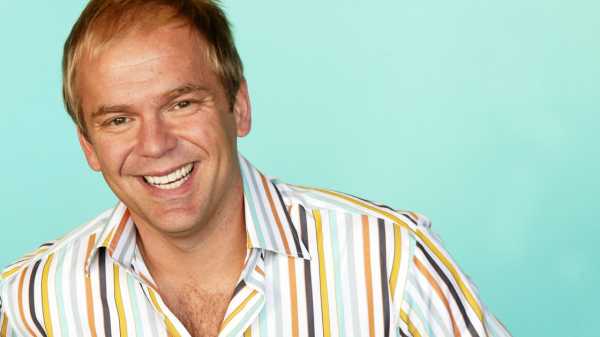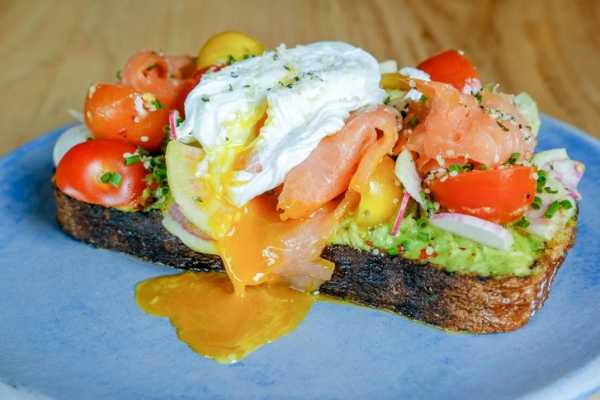
The first time I went to Ruby’s, New York’s original Australian café, which opened in 2003, I felt as if I’d been transported back home to Sydney: whitewashed walls to coax the light in; boisterous crowds at communal tables; employees who actually acknowledged you when you entered. At a time when New York was in the thrall of panini, Ruby’s instead served arugula salads, topped with poached chicken and pine nuts, in big bowls with zesty citrus dressings. There were more banana smoothies than laptops. The default coffee was a flat white rather than its watery drip cousin. Everything was, in short, a notch fresher, and a good deal more inviting, than it needed to be.
Still, for all its persuasive charms, Ruby’s was tiny—an outlier among Dean & DeLucas. Then, in 2005, the United States and Australia forged a trade agreement that, in the U.S., led to an influx of thousands of young Aussies, many of whom knew their way around an espresso machine. When Five Leaves, in Greenpoint, opened, in 2008, the Australian-café trend took off in New York. Today there are dozens of iterations in the city, and many more in Los Angeles; ditto in England, the “mother country,” the place from which, for many Australians, an ancestral passport can be scrounged. An American friend visiting London recently texted me, “What is your opinion of ‘Australian’ now being universal culinary code for healthy, hip, and probably with an avocado on it? I think I have been to three Australia-themed restaurants in two days.”
Last year, I moved to the island of Okinawa, off the southern coast of mainland Japan, and discovered that the Australian café is flourishing there, too. Good Day Coffee, which is situated near one of Okinawa’s biggest American military bases, was opened by a Japanese surfer, Tatsuya Miyazato, in March of 2016. Miyazato, whom I have never seen not dressed in a Hawaiian shirt, was inspired by the cafés he encountered on surfing trips to Australia, particularly those on the so-called Gold Coast, which is renowned for its waves, and in the hippie town of Byron Bay, where the coffee beans he serves are roasted. “I get tourists from the mainland, but also from Taiwan and Korea,” Miyazato said. “Many people in Asia now understand the Australian café.”
On an early spring morning in Tokyo, I had lunch with Bill Granger, the restaurateur who is most responsible for the Australian café’s global reach. The forty-eight-year-old Australian, who now lives in London, owns eighteen eponymous restaurants in Japan, Hawaii, the U.K., Korea, and, of course, Australia. We met at a branch in Ginza, but it may as well have been his Bondi Beach flagship. Nearing noon, diners’ plates were piled high with fried eggs and what Americans would call Canadian bacon. (The rest of the world would call it bacon.) Although we were in a densely populated shopping district, sun streamed in through the floor-to-ceiling windows.
Granger is the Platonic ideal of an Aussie bloke: perma-tan, blond, friendly in a low-key way. Even in the middle of the city, his restaurant buzzing around him and a laptop by his side, you half expect to see the cuffs of his linen pants rolled up for a beachside stroll. Granger opened his first Bills twenty-five years ago, in Sydney. An art-school dropout with no formal training in food, he had developed a passion for Mediterranean-style eating while working a job waiting tables. In the nineties in Australia, eating out was for a lucky few, and synonymous with fancy French fare. For the rest of us, restaurants meant Sizzler. Granger wanted to run an establishment that he felt was more in tune with the rhythms of Sydney life: getting up with the sun and enjoying the outdoors.
After Granger’s father, a butcher, loaned him twenty thousand dollars to start the business, he found a suitably cheap site with a rent of two hundred and fifty dollars a week. There was a catch: the landlord restricted his opening hours to between 7 A.M. and 4 P.M., Monday to Saturday. The restaurant fit just forty seats, and it was the height of a recession. Granger had an eye for design, and decked out the restaurant in the minimalist style that was beginning to supersede eighties rococo. Minimalism was cheap. So was breakfast.
With no liquor license, and no possibility of obtaining one from the draconian local council, Granger turned his attention to other beverages. “There was nowhere in Sydney you could get good coffee,” Granger said. “Just instant, and Lavazza.” Alongside the single-origin coffee that he had shipped in from Melbourne, Sydney’s more urbane cousin, were simple but thoughtfully prepared scrambled eggs, ricotta pancakes, corn fritters, and avocado on toast. The year was 1993. “Avocado was always just something I ate,” Granger said, with a shrug. “We didn’t even used to sell that much of it.”
Bills is often credited as the first restaurant to serve avocado toast. In 1999, Granger released his début cookbook, “Bills Sydney Food,” which included what might be the dish’s first published recipe: a smashed quarter slice of avocado, doused with lime and cilantro, salt and pepper, on sourdough. Last year, he told the Australian magazine Wish, “I remember thinking, this is so silly, putting a recipe for avocado on toast in a book!”
Simple as it was, that recipe became a signature dish as Granger opened restaurants around the world; eventually, it turned into a millennial food cliché. Everyone from Gwyneth Paltrow to Yotam Ottolenghi now has a spin on the dish. In her recent cookbook, “Everything I Want to Eat,” Jessica Koslow, of the cult L.A. eatery Sqirl, features a recipe for avocado toast with twenty-two ingredients, including carrots, garlic, crème fraîche, cardamom pods, unsalted butter, lemons, dill, and ground sumac.

Avocado toast at Ruby’s Cafe, in New York.
Photograph by Max Mila / Ruby's Cafe
Koslow, speaking on the phone recently from L.A., cited Granger as the inspiration for her business. “When I think of breakfast, the first thing I think of is Bills scrambled eggs,” she said. Koslow explained that, in 2010, she had been dating an Australian, and had visited Bills in Sydney on a trip they took together. “I’m from a Jewish family and used to think of scrambled eggs as dry vehicles for ketchup,” she said. “But then I had these eggs at Bills, and they were so light and fluffy and pillowy.” (His secret: plenty of heavy cream.) “That’s when it clicked for me,” Koslow added. “Daytime eating could be something taken just as seriously as nighttime dining.”
Like Bills when it opened, Sqirl doesn’t have a liquor license, opens early, and serves deceptively simple food. (You might think you could make Koslow’s signature ricotta-and-jam toast at home, but you know, deep down, that it would never look or taste as good.) Granger doesn’t own any restaurants in the continental United States, but Koslow is convinced that you can trace the rise of the elevated daytime café to him. She summed up the appeal of the Australian-style café in quintessentially L.A. terms: “It’s all about the hang culture.”
Hang culture, it turns out, has universal appeal. In Japan, Granger runs five Bills and often appears on TV, most notably on the NHK program “Asaichi,” a kind of Japanese “Good Morning America,” where he has cooked breakfast for the hosts. His most indelible dish in Japan is not avocado toast but pancakes. More than two thousand orders of Granger’s version are filled every day in his Japanese restaurants; diners in Japan tend to split a plate of two as a dessert. They are absurdly fluffy—a texture known to the Japanese as fa fa—and come alongside lashings of honeycomb butter. After we finished our lunch and strolled out into the Tokyo streets, Granger was stopped by two young Japanese women. “Are you Bill?” one asked. “We love your pancakes!”
Sourse: newyorker.com






